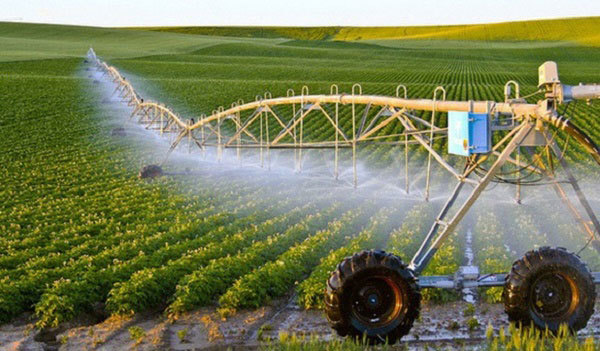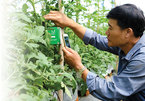 |
| Technology application in agricultural production helps increase productivity. — Photo: VNS |
With the rise of the digital economy, big data, artificial intelligence and other applications, digital transformation and smart agriculture in rural areas are inevitable trends.
“In the period of 2021-2025, rural areas must comprehensively and sustainably develop adapting to new circumstances,” Nguyen Minh Tien, head of the Central Co-ordination Office for New-style Rural Area Building, said in a recent seminar on digital transformation in agriculture and rural development.
Prime Minister Nguyen Xuan Phuc had approved a national programme on digital transformation for eight priority areas, including agriculture, said Tien.
This was an important sector that needed to carry out digital transformation, he said.
“The Ministry of Agriculture and Rural Development has found that the trend of digital transformation is indispensable, so instead of passively letting localities implement it spontaneously, it is necessary to approach comprehensively and proactively via appropriate steps and roadmaps to build sustainable rural areas,” the official said.
The ministry has been carrying out digital transformation for 12 communes, of which Yen Hoa in Ninh Binh Province and Vi Huong in Bac Kan Province got positive results within a few weeks of implementation.
In Yen Hoa Commune, digitalisation in health care service has helped save VND27 million (US$1,165) in two weeks. The money saved in one year is estimated at VND600 million ($25,900) for local people.
Meanwhile, in Vi Huong Commune, the turnover of agricultural products has greatly increased thanks to digital transformation via resources such as Zalo, Facebook and e-trading floors like Shopee.
Information and communication needs enhancing
Information and communication play an important role for poor people in remote areas, said To Duc, head of the National Office for National Hunger and Poverty Elimination.
Information and communication development must be linked with digital transformation, Duc said.
“It is necessary to set a goal of 80 to 100 per cent of people in poor and remote areas having access to the internet and mobile phone network,” Duc said.
The office has set up measures to push digital transformation and build smart rural areas, he said.
Meanwhile, the Ministry of Information and Communication (MoIC) has said that if Vietnam wants to be a powerful country by 2045, it must first succeed in the 4.0 revolution, especially in digital transformation.
At present, digital transformation is mainly in health care, education, agriculture and tourism.
The MoIC has been striving to provide mobile and fixed broadband coverage to all villages and help all people use smartphones, and 80 per cent of households have internet access by the end this year.
According to the Ministry of Agriculture and Rural Development, after 10 years of implementation, the National Target of New Rural Development had gained significant achievements.
Sixty per cent of total communes and 22.7 per cent of districts nationwide have reached new rural criteria, while the living standards of rural people have considerably increased.
“In addition to the great achievements in new rural development over the past 10 years, Vietnam’s rural areas are currently facing many traditional and non-traditional challenges,” said Tien.
In 2021-2025, the agriculture sector and the new rural development programme will face great challenges.
The first issue is climate change.
According to experts, Vietnam is one of the five countries most affected by climate change.
Second is the challenge due to diseases in plants and animals, such as the COVID-19 pandemic.
The diseases have changed the whole production chain, causing breaks in many production chains and changes in habits of both producers and consumers.
Third is the challenge of global competition.
In the process of international integration, all products, including agricultural produce, cannot only compete in the domestic market but also compete with international corporations.
With these shortcomings, the Party and Government have determined that rural areas must develop to adapt to the new context in 2021-2025.
“The gap between urban and rural areas is further widening so it requires rural areas to make changes to adapt to the circumstances,” Tien said.
“Information, science and technology application, especially digital technology is considered the preeminent solution to help narrow the gap and improve quality of rural people’s lives,” he added. VNS

Time is ripe for Vietnam's agriculture digitalization
Agriculture enterprises have been quite active in applying innovative solutions to transform towards digitalization.

Public-utility telecommunication policy: Narrowing the gap of information enjoyment among regions
Ensuring the right to information for all people is a consistent policy of the Vietnamese State so far, that is clearly stated in the Constitution and laws.